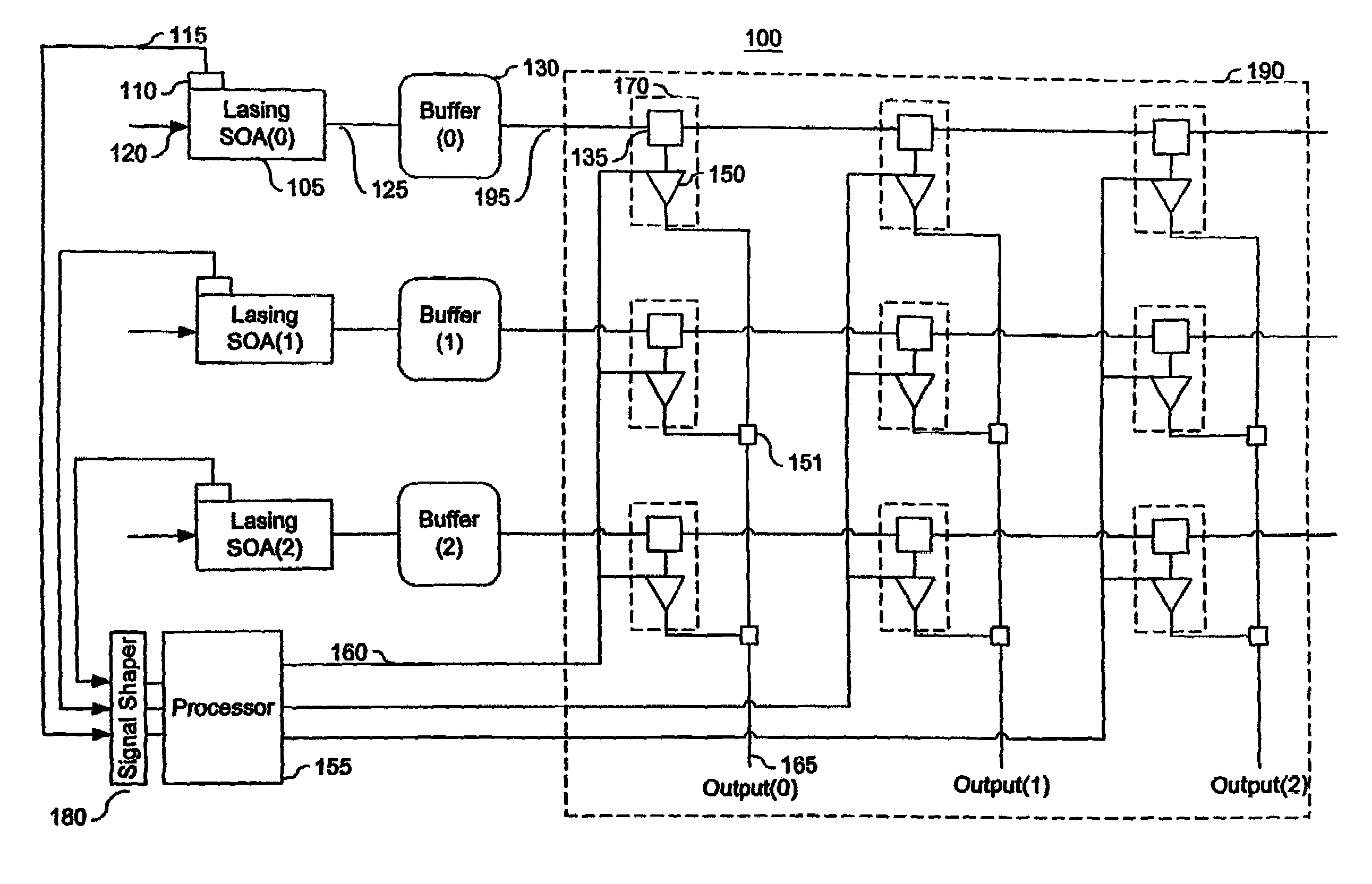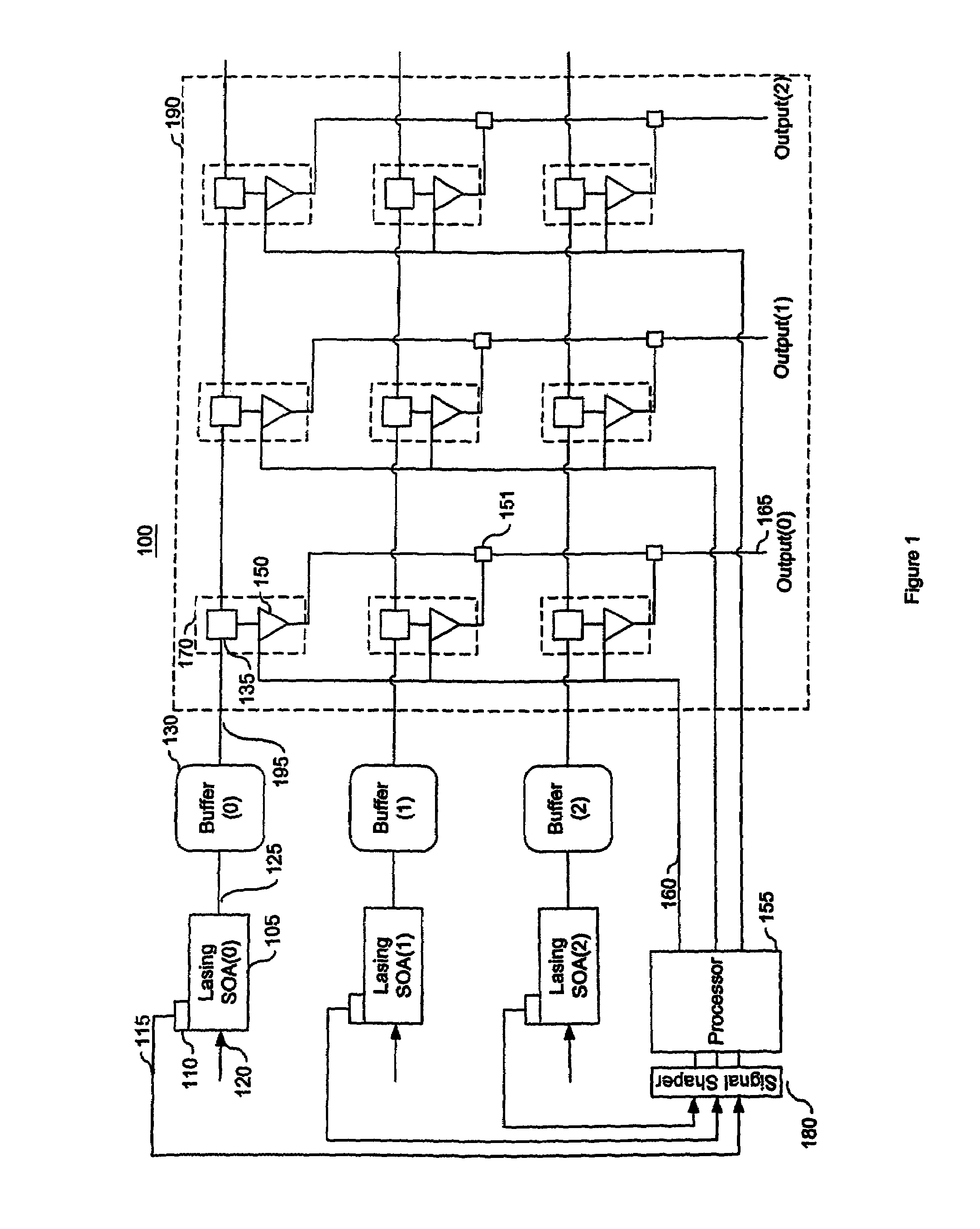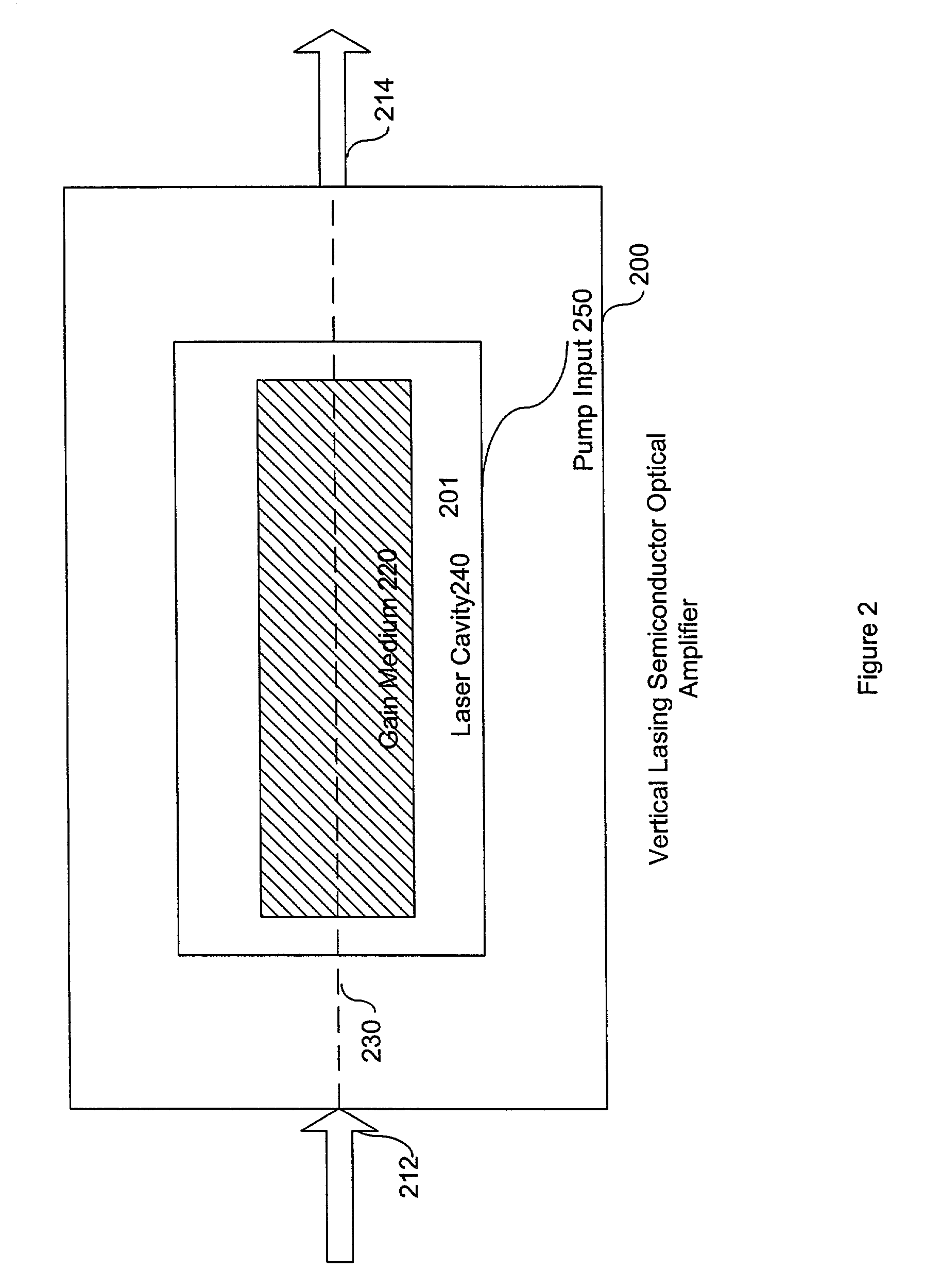Optical crossbar using lasing semiconductor optical amplifiers
a technology of optical amplifier and optical crossbar, which is applied in the direction of optical elements, semiconductor lasers, instruments, etc., can solve the problems of limited physical expansion or building out a network, the inability of new software applications to function properly, and the inability to increase network utilization so much, so as to increase the speed through which data may be switched, reduce the number of electrical components, and enhance the conversion between electrical and optical signals
- Summary
- Abstract
- Description
- Claims
- Application Information
AI Technical Summary
Benefits of technology
Problems solved by technology
Method used
Image
Examples
Embodiment Construction
[0029]In the following description, for purposes of explanation, numerous specific details are set forth in order to provide a thorough understanding of the invention. It will be apparent, however, to one skilled in the art that the invention can be practiced without these specific details. In other instances, structures and devices are shown in block diagram form in order to avoid obscuring the invention.
[0030]Reference in the specification to “one embodiment” or “an embodiment” means that a particular feature, structure, or characteristic described in connection with the embodiment is included in at least one embodiment of the invention. The appearances of the phrase “in one embodiment” in various places in the specification are not necessarily all referring to the same embodiment.
[0031]A. Optical Crossbar Switch Overview
[0032]FIG. 1 is a block diagram of an optical crossbar switch 100 that reduces the number of electrical components. This switch 100 comprises lasing SOAs 105, mon...
PUM
 Login to View More
Login to View More Abstract
Description
Claims
Application Information
 Login to View More
Login to View More - R&D
- Intellectual Property
- Life Sciences
- Materials
- Tech Scout
- Unparalleled Data Quality
- Higher Quality Content
- 60% Fewer Hallucinations
Browse by: Latest US Patents, China's latest patents, Technical Efficacy Thesaurus, Application Domain, Technology Topic, Popular Technical Reports.
© 2025 PatSnap. All rights reserved.Legal|Privacy policy|Modern Slavery Act Transparency Statement|Sitemap|About US| Contact US: help@patsnap.com



